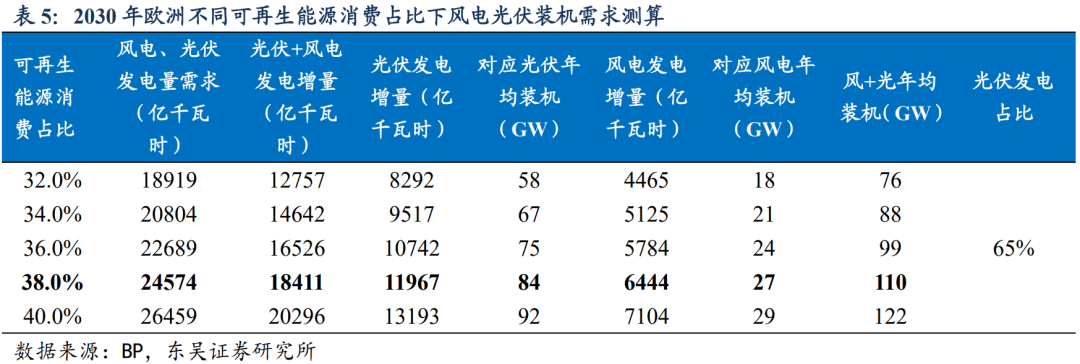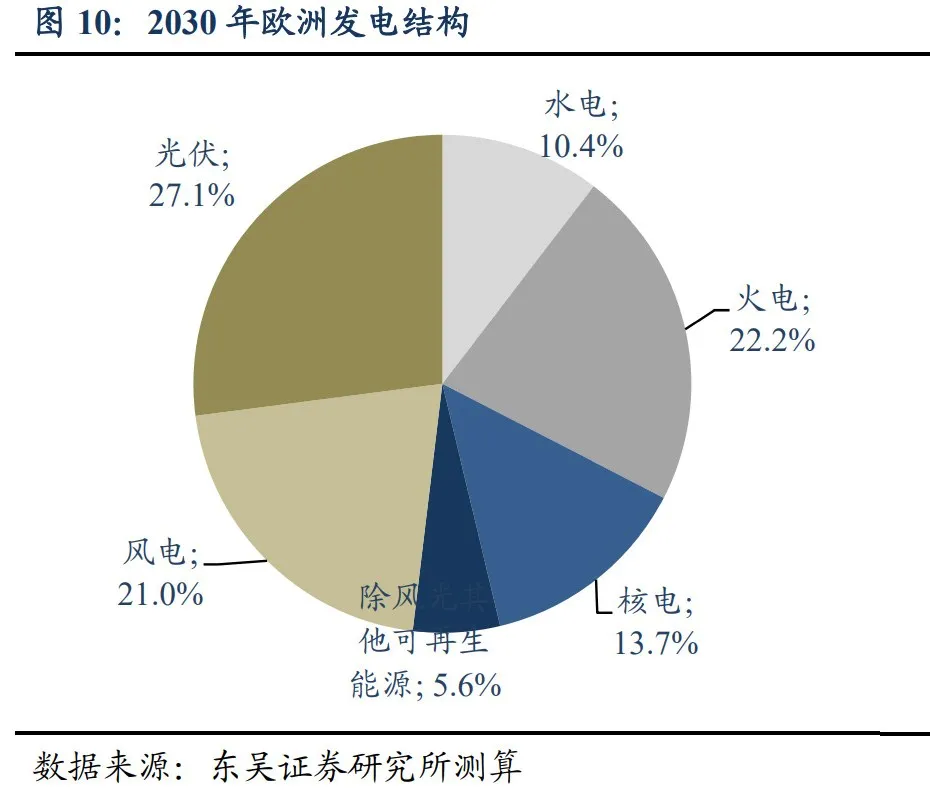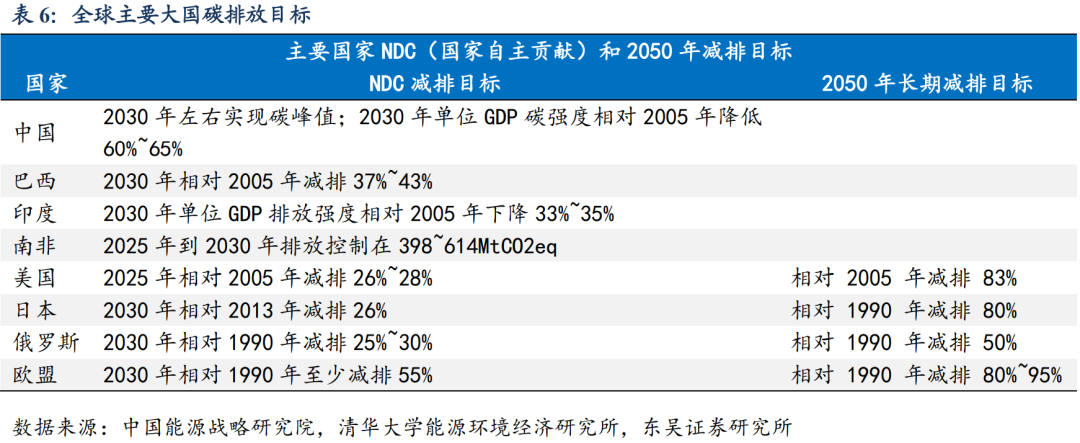On September 17, 2020, the European Commission officially released the “2030 Climate Target Plan” and the policy impact assessment report, proposing to raise the 2030 greenhouse gas emission reduction target from 40% to 55%. According to the plan, the European Parliament will vote on the “draft climate law” in October this year, and the relevant legislation will be revised by June 2021.
The EU is reducing emissions at an accelerated pace, promoting an increase in the share of renewable energy
Accelerating further, the EU is making great strides in reducing emissions.In order to cope with the climate crisis and achieve the goal of carbon neutrality as soon as possible, the EU has always taken a positive attitude in formulating relevant policies. From 2014 to 19, the EU set a 40% reduction target for greenhouse gas emissions in 2030 compared to 1990. In January 2014, the EU issued a white paper on new goals for climate and energy policy, which proposed that the EU's greenhouse gas emissions would be reduced by 40% compared to 1990 by 2030; in 2018, the European Commission proposed a long-term vision of “carbon neutrality” by 2050, which was established as a political goal in the form of legislation in March 2020. On September 11, 2020, the European Parliament's Environment Committee proposed for the first time that the 2030 emissions reduction target should be set at 60%.On September 11, the European Commission released the 2030 climate target plan, officially proposing to raise the 2030 greenhouse gas emission reduction target from 40% to 55%, complete the relevant legislative review by June 2021, and further revise the emission reduction target.
Favorable policies stimulate development of new energy sources
Based on emission reduction target estimates, the average annual installed capacity of photovoltaics in Europe between 2020 and 2030 is expected to be 80 GW+:According to the 2030 Climate Target Plan and Policy Impact Assessment Report,Only by increasing the renewable energy consumption target from 32% to 38-40% can the target of reducing emissions by 55% be achieved.Based on this, we forecast photovoltaic installations in Europe from 2020 to 2030 (assuming that Europe applies EU standards), and estimates that the average annual installed capacity of photovoltaics in Europe is expected to reach 84 GW, and wind and light installations are expected to reach 110 GW. It is mainly based on the following 3 assumptions:
(1) Renewable energy consumption in Europe accounted for 16.5% in 2019. We assume that Europe's share of renewable energy consumption in 2030 is conservatively estimated to be 38%; (2) From 2014 to 2019, the compound growth rate of primary energy consumption in Europe is 0.41%, assuming that the compound growth rate of primary energy consumption in 2020 to 2030 due to energy saving and emission reduction is 0; assuming that the compound growth rate of hydropower and renewable energy generation other than wind energy generation during the period 2020 to 2030 is 1% and 6%, respectively (the compound growth rates for 2014-2019 are -0.36%, respectively, 3.72%); (3) Assuming that the increase in photovoltaic and wind power generation accounts for 65%: 35%, the average number of hours that photovoltaics can be used per year is 1,300 hours, and the average number of hours that wind power can be used per year is 2,200 hours.
Europe raised its carbon emissions reduction target to 55% this time, corresponding to the increase in renewable energy consumption target from 32% to 38-40%. According to 38% estimates, it is equivalent to increasing the average annual installed capacity of photovoltaics from 58 GW to 84 GW, and the average annual new installed capacity of wind and light was raised from 76 GW to 110 GW. The increase in carbon emission reduction targets is a strong stimulus for photovoltaic installations.


Photovoltaics is gradually growing into the main form of energy:Looking at Europe's power generation structure in 2019, the main energy source is still thermal power, accounting for 40%. Renewable energy is mainly hydropower and wind power, accounting for 36.7% in total, and photovoltaic power generation accounts for only 3.9%. Assuming that the share of renewable energy consumption rises to 38% in 2030, according to our estimates, it is estimated that by 2030, the position of thermal power will weaken, with electricity generation accounting for only 22.2%; renewable energy will account for about 65% of electricity generation, an increase of more than 20 pct compared to 2019. Photovoltaics has gradually grown into the main form of energy, accounting for 27.1% of electricity generation, making it the largest energy form in Europe's power generation structure.


On a global scale, carbon emissions are becoming stricter, which is beneficial to the development of renewable energy
New policies are being implemented intensively, carbon emission standards are becoming stricter, and the development of renewable energy is unstoppable.Global attention and attention to carbon emissions and climate change is gradually increasing. Major countries have proposed carbon emission targets for the past 5-10 years, emphasizing the target share of renewable energy generation within the next 30 years, driving the world in the direction of “carbon neutrality.”
China:The 14th Five-Year Plan will soon be released for comments. In 2019, non-fossil energy accounted for 15.3% of energy consumption, completing the “13th Five-Year Plan” target one year ahead of schedule. Considering the rapid decline in costs and the importance China's senior leaders and policies place on renewable energy, we expect that the strategic target of 20% of non-fossil energy consumption will be completed ahead of schedule.In terms of carbon emissions, China plans to reduce carbon intensity per unit of GDP by 2030 by 60-65% compared to 2005.
Germany:According to the draft amendment to “Renewable Energy” (2021) released by the German Federal Ministry of Finance this week, 1) in 2021-2028, Germany will conduct public tenders for 18.8 GW (distributed 5.3 GW+ centralized 13.5 GW) photovoltaic power generation projects with the aim of promoting a further reduction in the cost of photovoltaic power generation. It is expected that by 2028, the price of large-scale ground-based photovoltaic power plants will drop from 0.075 to 0.059 Euros/kWh, a decrease of 21.3% within 8 years. 2) The elimination of the 20-year subsidy policy for renewable energy power plants marks a shift in renewable energy development from policy driven to market driven.Renewable energy in Germany accounted for 36.6% in 2019. The introduction of this policy will stimulate the market-based development of renewable energy power generation and achieve the target of 40-50% renewable energy in 25 and 65% in 2030 as soon as possible.
India:Prime Minister Modi stated at the World Solar Technology Summit in September this year that India's renewable energy target will be raised again.The target for non-fossil fuel power generation will be raised from 175 GW to 220 GW by 2022. India currently accounts for only 8.7% of renewable energyIt is far below the world average. With the rapid development of the global photovoltaic wind power market in recent years, the Indian government has raised development guidelines many times to promote the development of the renewable energy industry with high goals.To achieve the goal of reaching 40% of renewable energy by 2030.
United States of America:In July of this year, Biden proposed a climate plan.Invest $2 trillion over the next 4 years to strengthen America's clean energy infrastructure to reduce reliance on fossil fuels and strive to achieve carbon-free generation by 2035Electricity, this means that the US target of 50% of renewable energy generation by 2030 will be further raised. If this plan is implemented, we expect the scale of large-scale ground-based power plants in the US to expand further, and photovoltaic installations will continue to grow at a high rate.


Continued cost reduction drives the growth of photovoltaics as the main energy source:Photovoltaic energy is the renewable energy with the biggest drop in cost over the past ten years. At present, overseas prices have been achieved, and the country will fully enter the era of affordability next year. As the cost of photovoltaics electricity and energy storage costs continue to decline, photovoltaics may gradually grow from auxiliary energy to the main energy source.
